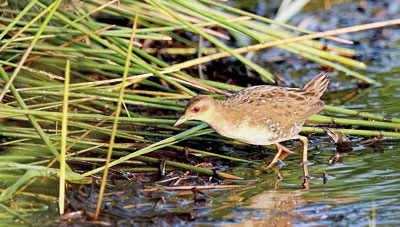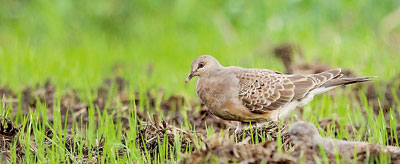News
Save Kirala Kele, a cry from environmentalists
View(s):
In December, a Baillon’s Crake a rare migratory bird to Sri Lanka was spotted in Kirala kele
With World Wetland Day being celebrated on Thursday (February 2) bird lovers here have called to protect the Kirala Kele wetland that recently made headlines due to the sighting of a record number of migratory birds.
Kirala Kele in Sinhala means ‘forest of kirala trees- or a ‘mangrove forest’. It covers an area of 1,800 ha with 310 ha of it being designated a wetland located at the exit of the Southern expressway in Godagama about three km from Matara town.
In December, a Baillon’s Crake a rare migratory bird to Sri Lanka was spotted in Kirala kele. The bird was seen in a particular area of the wetland, and bird watchers flocked to the wetland to see this rare bird. Subsequently more rare migratory birds such as the grey-headed lapwing, turtle dove, comb duck, marsh and even the greater spotted eagle were sighted in a small stretch of the wetland.
Kirala Kele earlier came under the purview of the Southern Development Authority. It was deemed a sanctuary in 2003 and declared as a conserved area under the ‘Sri Lanka – picturesque sites programme’ by a special gazette notification. Kirala kele is made up of different types of wetlands – marshland, mangrove areas, paddy lands, and irrigation canals – as well as numerous home gardens as it borders populated villages. Several encroachments are visible in many areas and concerned environmentalists have brought to attention the urgent need to protect it.
Ruhuna University’s Prof.Saman Chandana Ediriweera who has been researching the biodiversity of Kirala Kele for several years says, ” the area is an ideal wetland habitat for many organisms and can be considered as one of the most valuable conserved areas in the Matara District.” According to a study conducted by IUCN Sri Lanka, 83 plant species, 25 species of fish and 13 mammal species including the endemic Purple-faced Leaf Monkey inhabit Kirala Kele. The study recorded 103 bird species of which 48 were wetland birds and with the recent sighting of rare birds the number would be higher, Prof. Ediriweera said.
He warned that recent human activities within the premises of sanctuary would prove harmful to the ecosystem. He identifies garbage dumping, removal of vegetation, hunting, spread of invasive weeds as major threats to the wetland. Prof. Ediriweera says authorities should take immediate steps to curb these threats and save Kirala Kele wetland.
As Kirala Keleis a protected area, and now in the absence of a Department of Wildlife Conservation (DWC) field office in Matara, it comes under the purview of the field office at Kalamatiya.

Other migratory birds like the turtle dove was also spotted
Meanwhile Kalamatiya wildlife ranger Uthpala Adaranga said they regularly visit the sanctuary, but as private lands can exist inside a ‘sanctuary’, they are powerless to stop activities within the sanctuary that could be inimical to its ecosystem. In addition Kalamatiya is located about 50km away from Matara, posing a difficulty to monitor this protected area regularly. Environmentalists in Matara have highlighted the need for a DWC office in Matara so that quick action could be taken when the need arose.
In addition to being an important habitat in 2010 a plan was initiated to promote Kirala Kele as a tourist attraction with World Tourism Day celebrations being held in Kirala Kele. But the drive to promote it as a tourist destination didn’t last long.

